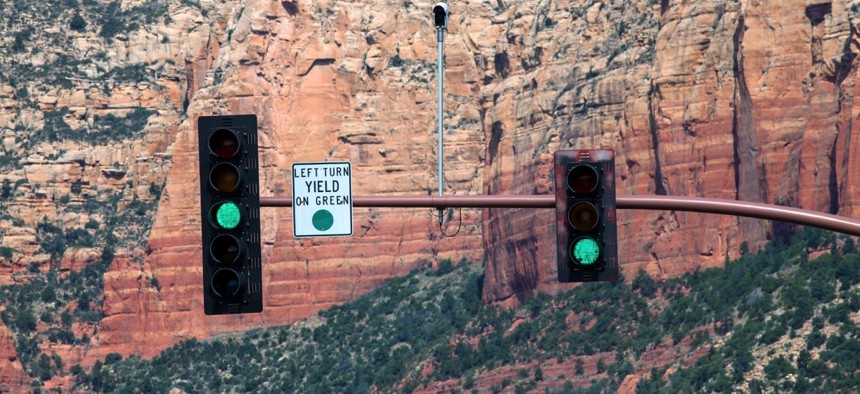Mitigating Traffic at Intersections With AI and Video Detection

The city of Maricopa, Arizona doesn’t have a traffic engineer, and now it doesn’t need one.
Maricopa, Arizona is improving vehicle detection at its intersections within an intelligent transportation system that acts like a consultant for limited city staff.
The city of 46,900 people south of Phoenix—not to be confused with Maricopa County, the state’s most populous county—lacks a traffic engineer. So it started by adding Miovision SmartLinks at 60 to 75 percent of signals to collect mobility data and relay it across a cell network several years ago.
Outside of providing useful troubleshooting at intersections, Maricopa at the time thought it might take back the state highway as part of a $50 million grade separation project due to be completed in 15 months.
“We don’t really have the technical expertise to look at the data and make changes to a coordinated plan,” Rob Dolson, the city’s street maintenance supervisor, told Route Fifty by phone.
The corridor features a number of charter schools that start and end their day at the same time, causing a lot of traffic pressure.
With the red-on-arrival data Maricopa now tracks, Dolson found a lot of priority was being given to north-south movement and drivers were waiting a long time to turn left. Miovision’s platform was able to make recommendations the city followed.
The Kitchener, Ontario-based traffic software company’s platform specializes in video analysis bolstering operational and congestion maintenance, as well as Vision Zero safety efforts. With its new SmartSense solution, Miovision has moved from helping cities minimize idling at intersections to informing police and transit planning, preparing for connected vehicles, improving air quality, and even promoting economic development.
“It’s the first system that’s been built on artificial intelligence and deep learning,” said Dave Bullock, Miovision vice president of market strategy.
AI ensures video detection systems are always learning, as traditional detection systems are fairly simplistic in treating anything that’s not the road as an object.
Many cities look at crash data before making traffic safety investments, but they’re typically sparse and random. An AI-backed detection system tracks movements, catches near misses with pedestrians and notes how often they use crosswalks appropriately.
Those systems will also help connected vehicles reach their full potential, not only talking to each other but with city infrastructure to learn what’s ahead of them. A traffic camera that catches a pedestrian making a quick j-walk could stop a car about to make a right-hand turn.
Some of Maricopa’s traffic cameras are a decade old, so SmartSense will replace detection at those intersections at a rate of two per year.
“Once you can get over the historical limitations of video detection systems, they’re the best way to understand and describe what’s happening at intersections,” Bullock said.
Dave Nyczepir is a News Editor at Government Executive’s Route Fifty and is based in Washington, D.C.
NEXT STORY: Tiny towns, small states bet on bitcoin even as some shun its miners






